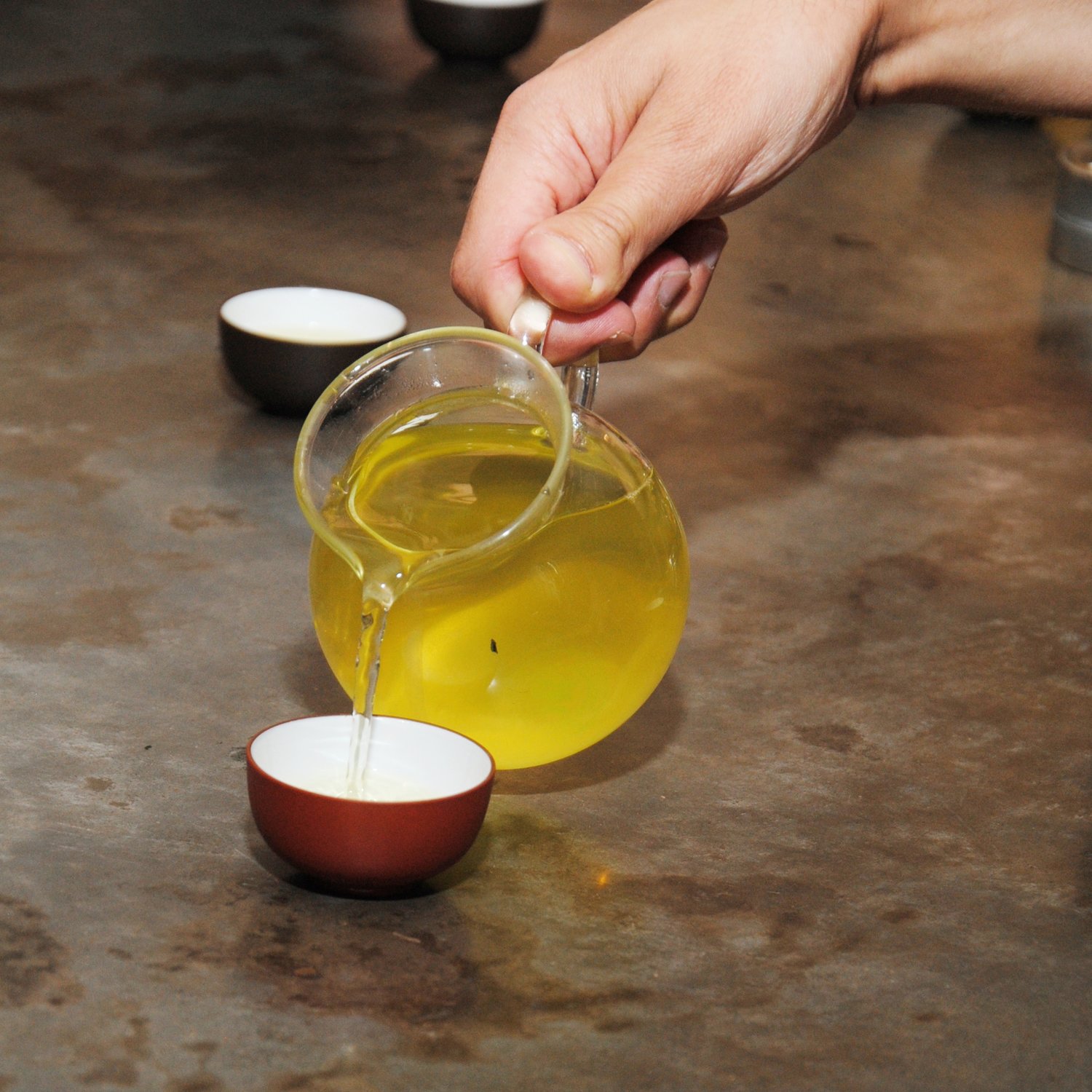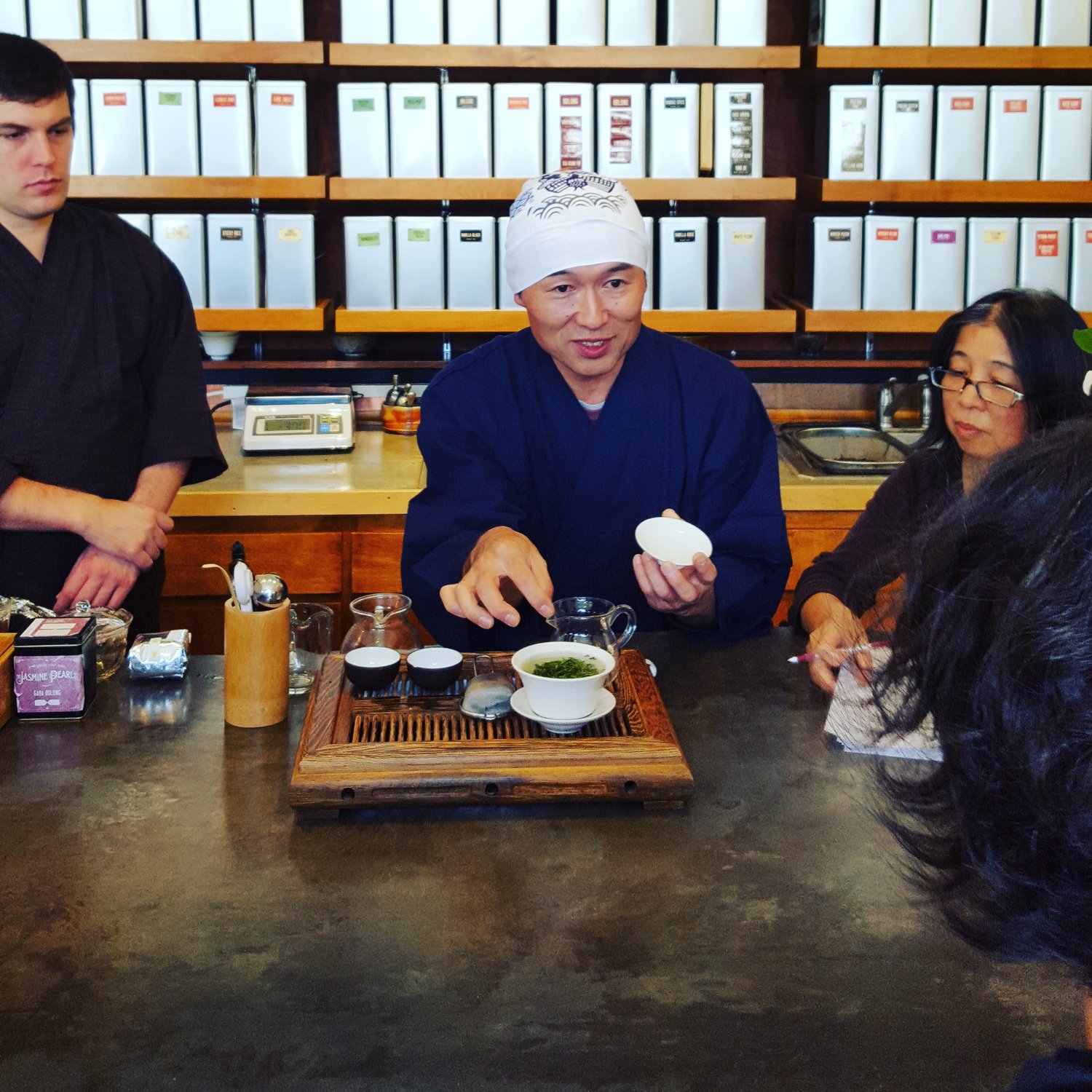The Art of Tasting Tea & Developing your Palate
Aug 31st 2016

Because the world of tea is so vast, and so complex, it offers a lifetime of opportunities for exploration and discovery. There are thousands upon thousands of different types of tea, each yielding unique flavors, textures, and aromas which you may never have experienced in any other type of food or drink.
Even though this may seem intimidating to you if you are just starting your exploration, the art of tasting tea and developing your palate are skills anyone can learn. You only need good tea, an open mind, a few simple tools, and a simple process to help develop your palate.
HOW TO TASTE TEA AND AWAKEN YOUR SENSES:
1. Prepare your body, mind, and space so that you can fully engage your senses with the tea. Open your imagination to include all experiences of your life within and outside the area of food and drink. Because tea comes from many places around the world and our preferences for what tastes good are highly linked to the culture to which we belong, it is important to stay open to new representations of what can be considered an enjoyable experience for your palate. As you taste more and better teas, your palate will naturally re-calibrate based on your new experiences and expectations.
2. Gather all the materials you will need to brew the tea. This will include the tea or teas you want to taste, filtered or spring water, a clear glass or white ceramic brewing vessel, a teaspoon, a food safe thermometer or tea kettle with temperature control, and a timer. Time, temperature, and water to leaf ratio are the 3 most basic factors in making a properly brewed cup of tea. It is important that you have the tools to accurately control these conditions.
3. Look at the dry leaves. With a few exceptions, good teas have a consistent appearance. The leaves should be roughly the same size, color, and shape. What is the color? Are the leaves curly, flat, furry, smooth, straight, twisted, rolled, cut, or whole? In most good quality teas, it’s easy to identify whole, intact leaves. 4. Brew the leaves using the appropriate time, temperature, and water to leaf ratio. On the back of our packaging we have included brewing instructions for each tea. Start by following the instructions to the best of your abilities. As you get to know the tea, adapt your brewing to bring out the qualities you’re looking for. Adjusting one of the variables can have a big effect on the outcome of the brewed tea. If the tea comes out too weak adjust one of the variables. Use a little more leaf, hotter water, or more steeping time the next occasion you brew it. If the tea is too strong or too bitter, try using less leaf, less time, or a lower temperature. 1 teaspoon of leaf to 8 ounces of water is an appropriate ratio for many teas. Green, white, and yellow teas are usually the most sensitive to temperature and taste best when brewed between 145 and 190 degrees Fahrenheit. Black and oolong teas are usually steeped at 190-212 degrees Fahrenheit. (Sencha is especially sensitive to time and temperature. If your sencha is bitter, try brewing at 150º F or below.
4. Brew the leaves using the appropriate time, temperature, and water to leaf ratio. On the back of our packaging we have included brewing instructions for each tea. Start by following the instructions to the best of your abilities. As you get to know the tea, adapt your brewing to bring out the qualities you’re looking for. Adjusting one of the variables can have a big effect on the outcome of the brewed tea. If the tea comes out too weak adjust one of the variables. Use a little more leaf, hotter water, or more steeping time the next occasion you brew it. If the tea is too strong or too bitter, try using less leaf, less time, or a lower temperature. 1 teaspoon of leaf to 8 ounces of water is an appropriate ratio for many teas. Green, white, and yellow teas are usually the most sensitive to temperature and taste best when brewed between 145 and 190 degrees Fahrenheit. Black and oolong teas are usually steeped at 190-212 degrees Fahrenheit. (Sencha is especially sensitive to time and temperature. If your sencha is bitter, try brewing at 150º F or below.
5. Look at the brewed leaves and tea. Pour the brewed tea into a white cup. An industry word for brewed tea is “liquor.” What is the color of the liquor? Is it green, red, gold, black, yellow? Is it clear like water? Cloudy? Are there particles or leaf hairs floating in it?
6. Smell the tea. The mouth can only taste five flavors: sweet, salty, sour, bitter, and "umami" which refers to a savory, brothy flavor. The nose can detect more refined scents such as floral, fruity, piney, earthy, smokey, mineral, oceanic, and barnyard. Breathe in the scent of the brewed leaves and the tea liquor. Take note of every thought that comes to mind. Use your life experience and memory to track down and identify the tasting notes. Don't limit yourself to only what you eat and drink.
7. Taste the tea. If the tea is at a safe temperature to drink, take a sip and slurp it. Slurping aerates the tea which allows for more aromas to reach your nose so you can smell and taste the tea simultaneously. Also, take sips gently, without slurping. Let the tea wash over your whole mouth. How does the tea feel in your mouth? What is the body of the tea? Is it watery or is it brothy? Is it astringent, or smooth and hydrating? What do you taste? How long does the flavor linger in your mouth? How does it feel as it passes through your throat?
8. Take notes. Keep a journal of your experiences. Write down your successes and mistakes each time you brew tea to refine your skills. Observe the smells, tastes and colors around you in your everyday life. This will help you be more specific when identifying the scents and flavors you experience. Pay attention to the day to day feeling and flavor in your mouth and how tea affects it.
9. Finally, don’t forget to take time out from thinking about tea, and simply immerse yourself in the pure, sensory experience and pleasure of it! That’s an important part of the process, too.
BOOK SUGGESTIONS
A few helpful resources with more information to get you started:
Tea: History, Terroirs, Varieties
by Kevin Gascoyne, Francoise Marchand, Jasmin Desharnais, and Hugo Americi.
The Tea Drinker's Handbook
by Francois-Xavier Delmas, Matthais Minet, and Christine Barbaste
Tea: Aromas and Flavors Around the World
by Lydia Gautier

